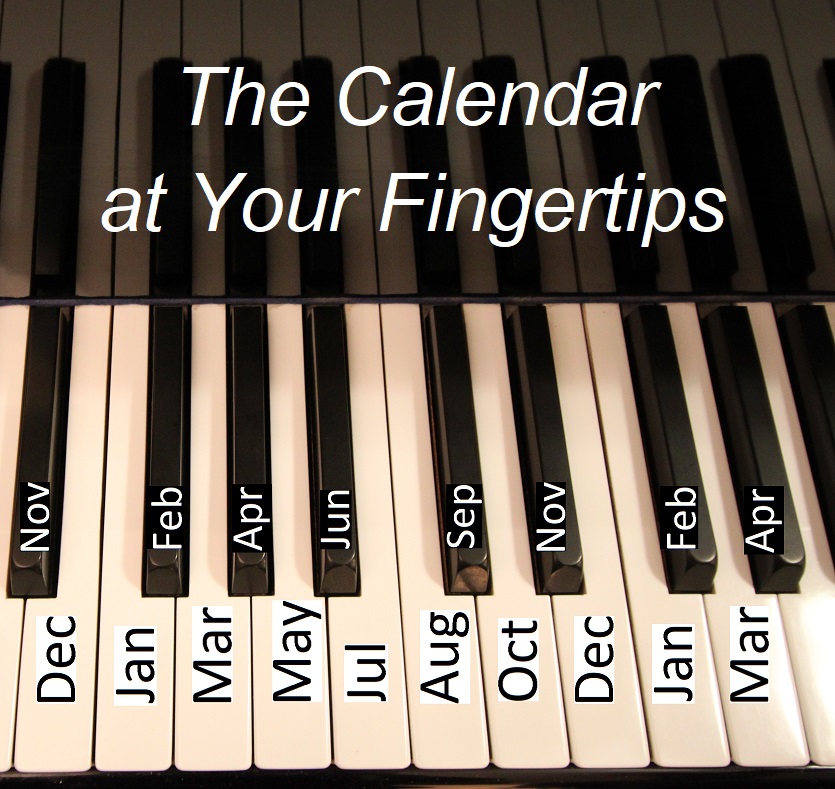The Keyboard Calendar
Our Western tonal system is based on 12 pitch classes, in which seven of the pitch classes are given more “weight” than the other five. The seven weighted pitch classes are determined by the particular major or minor key. In the key of C major, for example, the seven “diatonic” tones that comprise the C major scale — C, D, E, F, G, A , and B — are given more weight than the five “chromatic” tones. The system uses what mathematicians call “modulo 12” arithmetic, because if you start at a certain pitch class and ascend by a semitone 12 consecutive times, you return to the pitch class where you started. On a piano keyboard, the more-weighted diatonic tones in C major are sounded by white keys, while the less-weighted chromatic tones are sounded by black keys.
Our Western calendar is based on 12 months, in which seven of the months are given more “weight” in the sense of length than the other five. Specifically, the seven “long” months — January, March, May, July, August, October, and December — have 31 days each, while the other months are all shorter, ranging from 28 to 30 days. The calendar is again a “module 12” system: If you start at (say) March and increment by 12 consecutive months, you find yourself back at March.
But here’s the truly remarkable part…

If you align the two systems such than January = F, the longer months (with 31 days) correspond precisely with the physically longer white keys, while the shorter months (with 28 to 30 days) correspond precisely with the shorter black keys.
Traditionally, we think of the calendar as starting at January, so the twelve months of each year correspond to the twelve tones of a chromatic scale starting on F, and each year is an octave higher on the keyboard than its predecessor.
So why bother memorizing “Thirty days hath September…” or learning some awkward knuckle-counting mnemonic? A diagram of the long and short months is right in front of you!


Incredible article, thank you!
This is brilliant! I wrote a suite for solo piano called ‘A Musical Calendar’ back in 1992, without ever realising this…!
Thank you, Richard! I just received your two emails and sent you a reply. I’m glad to meet you!